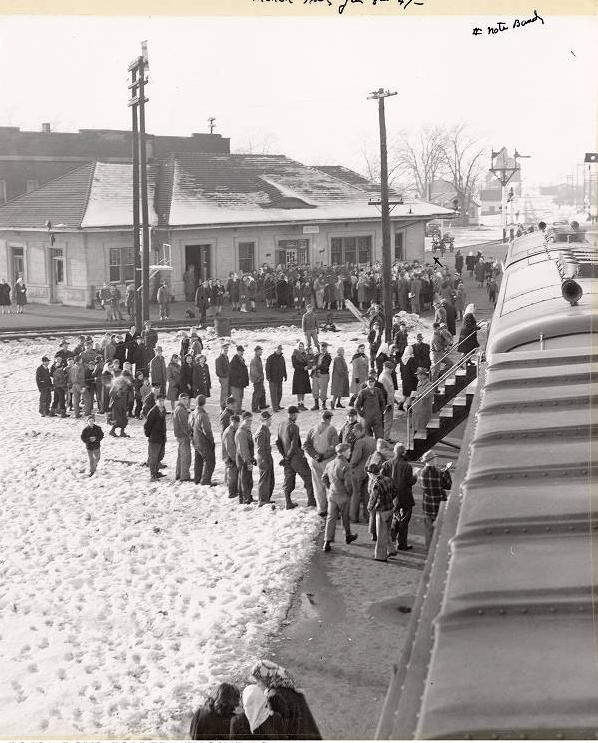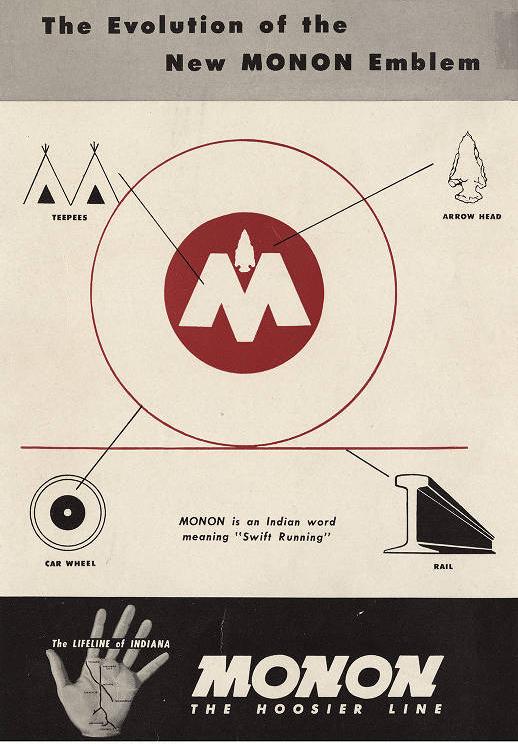The Monon Railroad’s Indianapolis branch dates to 1865 when the Indianapolis, Delphi, and Chicago Railway, later the Indianapolis and Chicago Air Line, was incorporated. The railway was used by the state’s growing limestone industry, and it served as an invaluable resource for Union soldiers during the . The Indianapolis, Delphi, and Chicago Railway also carried President Abraham Lincoln’s funeral train during the 20-day journey from Washington, D.C. to Springfield, Illinois. Operation of the railway began as a narrow-gauge line between Rensselaer and Monticello. Following conversion to standard gauge, the Louisville, New Albany, and Chicago Railway acquired it in 1881.

The standard gauge line reached Indianapolis in 1882, the year after it had arrived in Chicago, but, until 1888, it used the Lake Erie and Western tracks (later the Nickel Plate and Norfolk and Western) south of Howland’s Junction, near 34th Street and Fall Creek Parkway. Passenger service began in 1883 and had been expanded to four round trips daily by 1889, including an overnight train carrying sleeping cars. Trains carried through cars that continued to Cincinnati over what became CSX.
The railroad was reorganized as the Chicago, Indianapolis, and Louisville Railway in 1897, not formally adopting its longtime nickname for the White County junction of its two main lines, Monon, the Potawatomi Indian word for “swift running,” until 1956. Lacking a strong freight base in Indianapolis, the Monon emphasized passenger service and built Boulevard Station on East 38th Street to serve the city’s northside in 1922.

The Monon was also well-known throughout the state as serving several Indiana colleges, including Purdue University, Indiana University, Wabash College, DePauw University, Butler University, and St. Joseph’s College. The railway became so intertwined with college life that it even painted train cars with the colleges’ school colors. Its legacy is still felt at Wabash College and DePauw University: the Monon’s bell serves as the trophy for their annual football rivalry game.
In 1947, the railroad, which was the shortest line to Chicago, re-equipped all trains with rebuilt army hospital cars, but, as travelers turned to other modes of travel, it eliminated all service on April 10, 1959. The Louisville and Nashville Railroad acquired the Monon in 1971, and its successor, Seaboard System, abandoned the Indianapolis-Frankfort segment and removed the rails in 1985. The trackbed through northern Marion County was repurposed in the late 1990s for use as a recreational pathway known as the .

In 1947, the railroad, which was the shortest line to Chicago, re-equipped all trains with rebuilt army hospital cars, but, as travelers turned to other modes of travel, it eliminated all service on April 10, 1959. The Louisville and Nashville Railroad acquired the Monon in 1971, and its successor, Seaboard System, abandoned the Indianapolis-Frankfort segment and removed the rails in 1985. The trackbed through northern Marion County was repurposed in the late 1990s for use as a recreational pathway known as the .

Help improve this entry
Contribute information, offer corrections, suggest images.
You can also recommend new entries related to this topic.




